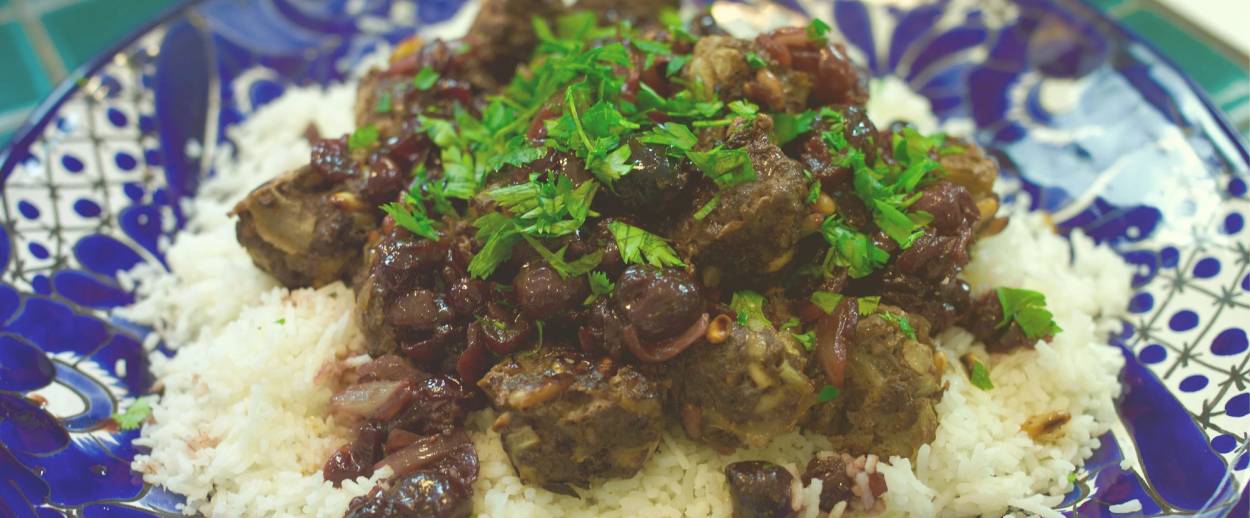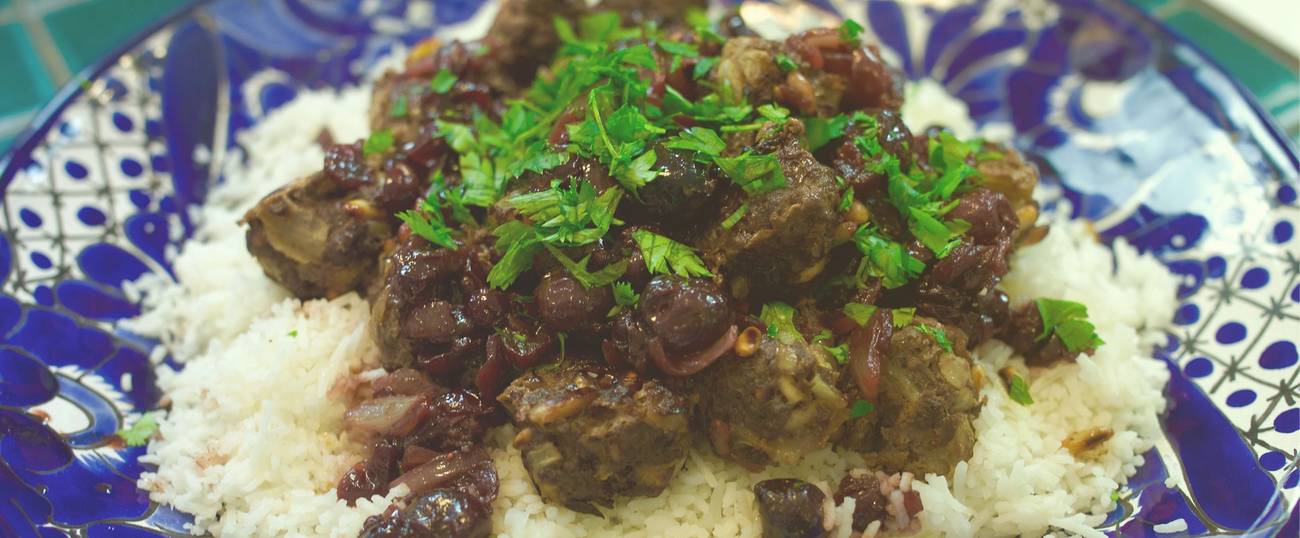How To Put a Syrian Spin on Your Hanukkah Feast
Make a batch of keftes—sweet-and-sour Syrian meatballs with cherries and tamarind




Most Americans associate meatballs with spaghetti and tomato sauce. Sephardic and Middle Eastern Jews think of albondigas or keftes—patties that are often eaten at Hanukkah, because they are sometimes fried in oil.
This Syrian sweet-and-sour keftes recipe—flavored with dried sour or sweet cherries and tamarind sauce and baked rather than fried—has been handed down in the family of Melanie Franco Nussdorf, a Washington, D.C., lawyer who loves to cook the dishes of her ancestors who came to New York from Aleppo five generations ago.
Tamarind, from the Arabic meaning “date from India,” is an ancient sweet-and-sour fruit originally from Africa. From the Middle East, tamarind traveled with Arabs and Jews to Spain and was later brought by the Spanish to Latin America. Tamarind paste, easily purchased today, used to be made at home, via a laborious process of first softening then squeezing in cheesecloth. It is a lovely flavoring component, not only in Syrian cooking, but Persian, Iraqi, Georgian, and Indian dishes.
Within Jewish communities, you often can guess that a dish has Syrian roots if you find tamarind listed in the ingredients. Tamarind was once used the way we use tomatoes today to add acidity, depth, and sweetness to a sauce. Since Melanie’s family recipe also contains tomato paste—a relatively recent addition to Old World cooking—we can tell that it has been updated over the years. But it remains a Syrian dish at heart, perfect for Hanukkah.
Joan Nathan is Tablet Magazine’s food columnist and the author of 10 cookbooks including King Solomon’s Table: a Culinary Exploration of Jewish Cooking from Around the World.